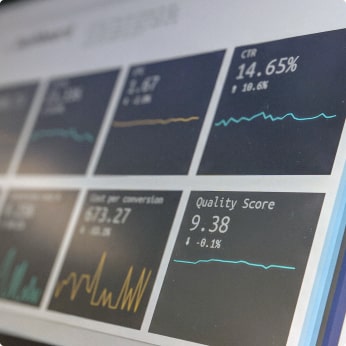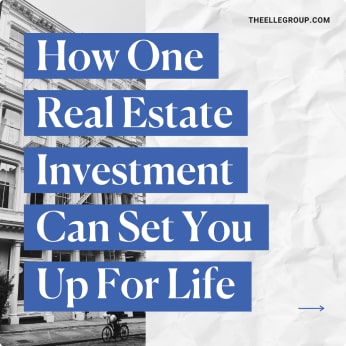For most people, the 20s are a time for hustling from job to job and lamenting how much money you don’t have. But forward-thinking individuals like yourself might wonder: does it have to be this way?
Absolutely not. In fact, you can start setting yourself up for life and working toward a freer financial future in your 20s even before you’ve settled on a consistent career. How?
Real estate. What’s more, we’re here to tell you that just one real estate investment can set you up for life if you make the right purchase in your 20s. Sounds too good to be true? Let’s dive a little deeper…
Why Invest in Real Estate?
Simply put, it’s the best vehicle for consistent, reliable wealth building. Think about it – no matter what happens to the economy or how technology evolves, people will always need one thing: a place to live. That’s (one reason) why investing in real estate is the only true choice if you want to set yourself up for long-term financial independence and security.
Choosing the Right Investment in Your 20s
While investing in real estate is the best way to set yourself up for long-term financial independence and security, you’ll have to pick the right investment. Not all properties or investments are equal! You’ll specifically want to target investment properties that represent a good potential return on your investment in both the short and long term.
There are a number of factors to consider, including:
- The initial purchase price and state of the market
- State of the building and repairs that may be needed
- Existing tenants within the property (if any)
- Location of the property and what type of tenants rent here
- Public transportation and logistical access
If you’re a first time investor, finding answers to the above questions can feel daunting. The last thing you want to do on your first deal is get in over your head or buy a ‘loser’. Fortunately, this is where a real estate agent, specifically one that deals with investment properties (read: The Elle Group), can step in and help answer any and all questions you may have!
Single-Family vs Real Investment Properties
There are, broadly speaking, two types of investment properties you can target: single-family homes, which are traditional houses that are rented by one family, and multifamily properties, which are rental buildings that include multiple (typically 2-4) units.
Both are viable options and there’s no one true right answer. It’ll all depend on the location you’re buying in, the capital you have access to, and what your overall investing goal is.
Problems with Single-Family Homes
Single-family homes have a lot going for them, including a low tenant turnover rate. As an investor, this means the property is less likely to sit vacant between tenants, less likely to need repairs on a regular basis (as tenants move in and out), and depending on location, they can be much cheaper than a multi-family.
However, they also have a number of problems. Single-family homes are hard to scale. In other words, you won’t see a return on your investment as quickly when all your costs add up. Furthermore, your monthly cash flow will likely be relatively low since you have to factor in costs for upkeep and potential accidents.
Additionally, it can be tough to get into real estate investing with a SFH as it’s quite difficult to ‘House Hack’ with roommates vs. a multi-family where you can have tenants in separate units.
Benefits of Going with a More Robust, Investment-Focused Property
Multi-family properties have other advantages as well. They can provide you with higher monthly cash flow, even in the beginning and after accounting for maintenance and emergency expenses. They’re also great for leveraging the economy of scale – it makes sense that you make more money by making a single big purchase (with low money down AND low interest rate) and collect rent from 4 units instead of making a smaller purchase and only collecting rent from a single unit.
Lastly, and most importantly, a multi-family is the perfect way to get introduced to real estate investing. As an ‘owner-occupied’ landlord, you can put low money down (3%) to purchase the property, and then have tenants from the other 2-3 units pay your mortgage and other expenses for you!
How Does One Investment Property Build Wealth Over Decades?
The details are interesting to think about, how can a single investment set you up for life? Let’s break down how one excellent investment can solve your financial insecurity with a hypothetical example.
Take a new investment property you’ve just purchased. Here are the major financial details:
- Purchase Price: $740,000
- Property: Multi-family property with 3 units and 8 bedrooms in total.
- Down Payment: 5% or $37,000
Now let’s take a look at the monthly expenses you’d need to pay after purchasing the property.
- Monthly mortgage: $2,964
- PMI: $585
- Taxes: $540
- Insurance: $217
- Water and Sewage: $350
- Common Electricity: $50
In addition to all of those regular expenses, you’d be wise to put aside some money every month to handle unexpected or emergency costs, like replacing a water heater or replacing your roof every 20-30 years. Then you’ll need to account for the expected vacancy (the amount of time in which one of your property’s units is unfilled.
- Expected Vacancy: $778 per year
- Maintenance Costs: $3,895 per year
- Costs for Property Management: $3,895 per year (not required if you want to self manager)
Now let’s look at the income side of things. Prior to purchasing, you see that market rents for unit 1 and 2 is $2,200 a month and $2,000 a month for unit 3. You can also expect to receive an additional $90 per month or so for the coin-op laundry located in the basement.
That gives you a total income of $6,490 per month. Measure that against your total expenses of $5,420 per month and you’ll have a monthly cash flow of $1,068 per month. In other words, every 12 months, you’ll receive $12,816 in profit.
But here’s where the real wealth building comes in, appreciation. Appreciation is the amount of money the home’s value goes up in every year. Sure, there will be some down years, but overall the market has risen by 4-5% per year over the past 100 or so years.
So the first year your property may go from the $740,000 you purchased it for to $777,000 (5% increase). But let’s extend this appreciation a bit further. Let’s assume you purchased this property at 25, how will it look in 30 years, when you’re now 55?
Your property is now valued at nearly $2.5M, it’s also been completely paid off (by your tenants) so if you were to choose to sell it, that’s pure profit back in your pocket. But when this property is now producing a monthly cash flow of $11,362, do you really want to sell it?
See what one single real estate investment can do for your future?
Still sound too good to be true or don’t know where to start? That’s what we’re here for! Reach out today and schedule a call with one of our real estate advisors to see how we can help!


